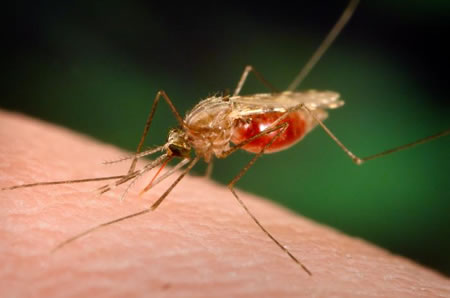Novel biocontrol method can help cut malaria transmission
 Washington, October 2 : The transmission of malaria can be reduced by using biopesticides that contain a fungus that is pathogenic to mosquitoes, particularly in combination with insecticide-treated bednets (ITNs), according to a study.
Washington, October 2 : The transmission of malaria can be reduced by using biopesticides that contain a fungus that is pathogenic to mosquitoes, particularly in combination with insecticide-treated bednets (ITNs), according to a study.
Dr. Penelope Hancock, from Imperial College London, says that incorporating this novel vector control technique into existing vector management programmes may substantially reduce malaria transmission rates, and help manage insecticide resistance.
According to a report published in the open-access journal PLoS Computational Biology, using data from laboratory and field studies, the model estimates the impact of different vector control interventions on the mosquito life cycle and the average numbers of mosquitoes that survive to transmit malaria.
The results indicate that in order to successfully control malaria transmission, single intervention strategies must be widely used across the community, whether the strategy involves fungal biopesticides or ITNs.
Using the interventions in combination enables them to interact to produce greater-than-expected reductions in malaria transmission rates, according to the model.
Dr. Hancock says that this outcome is achieved because the presence of ITNs can increase mosquito exposure to biopesticide-sprayed surfaces.
The researcher believes that efficient combinations of interventions may allow each to be used at lower levels, and slow the development of resistance in the mosquito population.
The results suggest that combining fungal biopesticides and ITNs may be an efficient and effective strategy for malaria vector control.
The study has used computer modelling to identify ways in which interventions can be combined to maximise the impact on malaria transmission, given the resources available. (ANI)